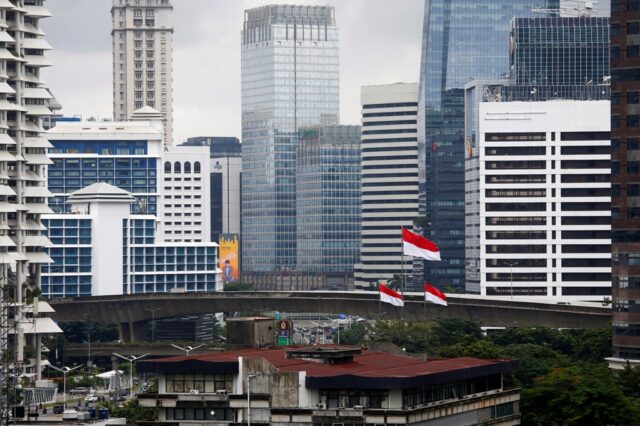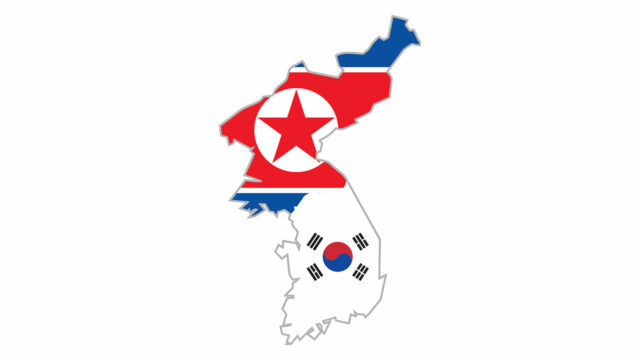The opinions expressed here are those of the author, a columnist for Reuters.
by Peter Apps, Reuters Columnist
LONDON – As a joint US-Philippines exercise drew to a close last month, US troops at Basco airport in the northern island province of Batanes were testing a cutting-edge high-altitude drone to conduct reconnaissance and transfer information to the Filipino military.
Exercise “Balikatan”, the main annual US-Philippines joint military drill has been held 39 times since 1991. This year’s iteration – from April 22 to May 10 – included more than 16,000 personnel from the U.S., Philippines, Australia and France.
Traditionally held in the center of the Philippines, this year’s exercise also took in small northern islands in the Luzon Strait – including Batanes province, the area of the Philippines closest to Taiwan some 120 miles (200 km) away.
Giving the US military access to those remote locations would be critical to any conflict over Taiwan, which US officials say Chinese President Xi Jinping has ordered his military to be ready for by 2027, sparking a host of US and allied military preparation across the Asia Pacific region.
The first months of this year have also seen an ongoing escalation in tensions between the Philippines and Beijing.
China’s coast guard has used increasing levels of non-lethal force – including water cannon and collisions – against Filipino fishing boats as well as ships reinforcing a Filipino military detachment on the landing craft “Sierra Madre” that is purposely grounded on the disputed Second Thomas Shoal.
On June 4, Philippines officials said Marines on the landing craft drew their weapons as a “precautionary” measure in self-defense as rigid inflatables of the Chinese coast guard approached the “Sierra Madre” and seized packages of supplies that had just been dropped by Filipino forces by air to reinforce the tiny garrison.
At the major annual Shangri-La national security meeting in Singapore in late May organized by London’s International Institute for Strategic Studies, Philippines President Ferdinand Bongbong Marcos was asked how Manila might respond to the death of a Filipino sailor in such an incident.
The Philippines and United States have a mutual defense treaty, and some analysts increasingly worry that the mounting face-off over several disputed maritime boundaries might yet trigger an unintended war.
The Filipino leader, son of ousted late dictator Ferdinand Marcos, denounced what he called the “illegal, coercive, aggressive and deceptive actions (by China that) continue to violate our sovereignty, sovereign rights and jurisdiction”.
“If a Filipino citizen is killed by a willful act, that is, I think, very very close to what we define as an act of war, and therefore we will respond accordingly,” Marcos told an audience that included US Defense Secretary Lloyd Austin and Chinese counterpart Admiral Dong Jun. “And our treaty partners, I believe, also hold that same standard.”
Admiral Dong delivered his own hawkish speech at Shangri-La, just days after some of the most aggressive Chinese military posturing so far around Taiwan in maneuvers US officials said appeared to be a rehearsal for invasion and blockade.
RISING RHETORIC
Mr. Dong warned that “Taiwan separatists” would be “nailed to the pillar of shame in history” and that any countries interfering with “reunification” of Taiwan with China would face “self-destruction”.
He said Beijing had exercised restraint in the face of “infringements and provocations” carried out by a certain country he did not name, but clearly implied to be the Philippines.
China claims democratically governed Taiwan as its own territory and has never renounced the use of force to take over the island. Taiwan strongly objects to China’s sovereignty claims, saying only the island’s people can decide their future.
The Shangri-La meeting saw the first direct face-to-face meeting between Chinese and US defense chiefs since 2022, designed to help manage the risk of accidental conflict. But neither side appeared to be backing down.
US officials said Austin specifically raised the issue of Chinese “provocations” in the 75-minute session, while Austin’s public remarks reasserted US commitment to the region.
“Let me be clear: the United States can be secure only if Asia is secure,” Mr. Austin said. “That’s why the United States has long maintained our presence in the region.”
Most analysts believe there are two ways a conflict might start in Southeast Asia. The first would be an accidental escalation of an incident in the South China Sea such as around Second Thomas Shoal, and the second would be a deliberate Chinese act – most likely an invasion of Taiwan – that then sparks a much wider conflict.
Building up the US and Filipino military presence in the northern Philippines is regarded as crucial to deterring such outcomes, or indeed fighting such a conflict if deterrence fails.
US-Filipino military links declined after the fall of the first Marcos from power in 1986, with US forces evicted entirely in the 1990s. But they have ratcheted up substantially once again since his son was elected president in 2022, driven by shared perceptions of a rapidly rising threat from China.
The 1988 constitution bans the permanent stationing of foreign forces on Filipino soil. But since Marcos’ election, US forces have increased what they described as a “temporary, rotational presence” of a variety of units within the country.
Last year, the US and Philippines announced joint naval patrols along the northern Filipino coast, where the Manila government is roughly doubling the number of its forces as part of a broader military expansion.
UNAMBIGUOUS MESSAGING
Over the last year, analysts and US officials have begun to talk of the Philippines, Japan, Australia and United States as the “Squad”, conducting informal joint meetings and policy coordination as the four nations most committed to cooperating in the event of a regional war with China.
That four-way relationship, insiders say, is now notably tighter than that between the Australia-Japan-U.S.-India grouping known as the “Quad”, which also holds joint military drills and works together on humanitarian responses.
India, however, continues to pursue a more independent foreign policy – including much closer relations with Russia – in comparison with the Philippines, which now openly expects to find itself fighting alongside the United States in any war.
The US now has access to nine bases across the Philippines, spending more than $100 million on them by the end of 2023.
This has included rebuilding runways and command and control systems at Basa Air Base, the largest Filipino air force installation now capable of housing most types of US aircraft in a crisis.
According to the US Marines, several Reaper drones are also rotating through the Philippines, although further details of that have been kept largely under wraps.
Much more widely publicized, however, was the “SINKEX” element of the most recent drills, in which Filipino and US forces used missiles to sink a Chinese-built merchant ship.
Footage of that was then heavily shared by Filipino social media channels in what appeared a not-so-subtle message to Beijing.
According to US officials, future iterations of joint military drills are likely to be even larger – and considerably more high-tech. That is likely to include testing drone swarms as well as deploying heavy weapons.
This year’s exercise saw the deployment of the US Army’s Mid-Range Capability (MRC) missile system, a land-based variant of the naval Tomahawk missile capable of hitting land targets in either China or Taiwan from the northern Philippines.
“Every Balikatan is increasingly more complex,” said Philippines exercise director Major General Marvin Licudine. “This year has produced several new collaborations considering dynamic challenges across all domains.” – Reuters












